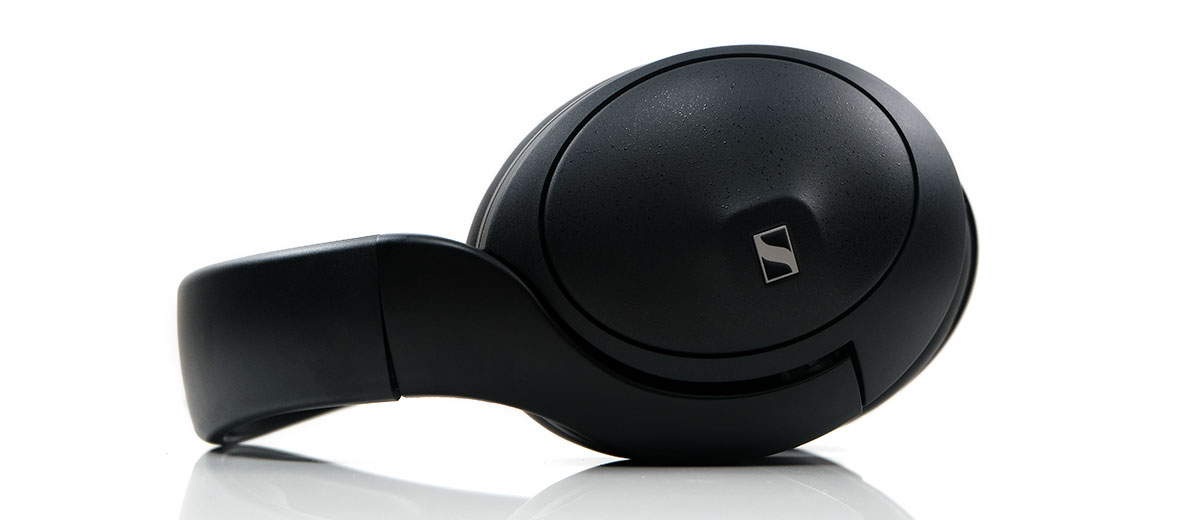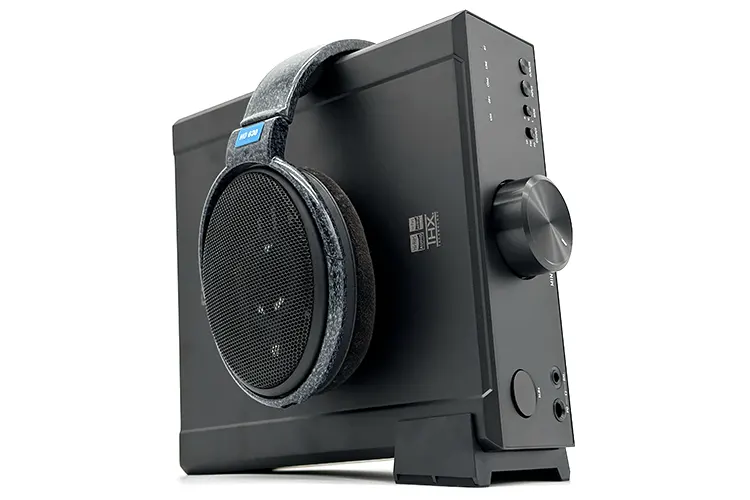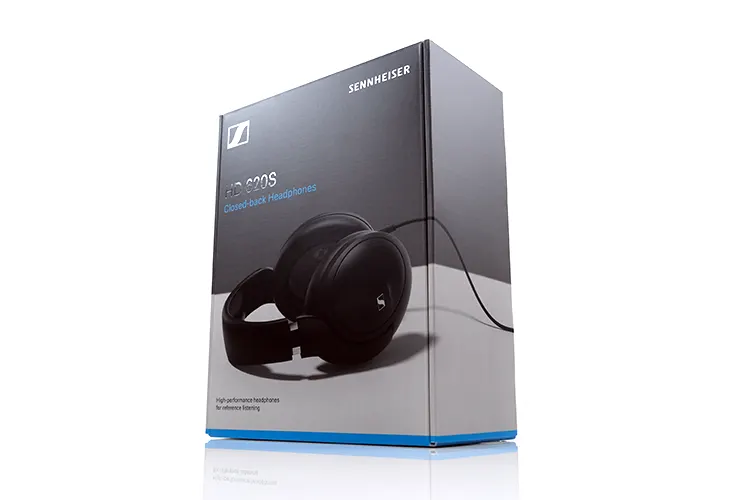Selected Comparisons
The following comparisons to the HD 620S were completed using the Cayin HA-2A and the Feliks Audio’s EUFORIA evo for amplification with the Cayin Mini-CD MK2 as the main source for desktop use. The ONIX Mystic XP1, Chord’s Mojo 2, and the HiBy R8 II were used for portable assessment.
Though all 3 compared models are open-back, I decided to use them for the comparison to see how well the HD 620S fits into the 6 Series performance-wise.
Sennheiser HD 660S2
The Sennheiser HD 660S2 was launched in the middle of last year and is a 2nd generation flagship set of headphones for the company’s HD 6-series headphones.
Technical
The HD 660S2 is a circumaural open-back dynamic driver headphone whereas the HD 620S is a closed-back design with a different voice coil despite both drivers being 42mm sized with 38mm diaphragms.
The flagship 6-series ultra-light aluminum voice coil weight has been reduced and the magnetic force around increased to improve the impulse response of the driver.
The winding is slightly different from the HD 620S version with its higher 300Ω rating as opposed to 150Ω and a lower level of sensitivity at 104 dB @1kHz / 1Vrms compared to the HD 620S’s 110 dB @1 kHz / 1 Vrms rating making the HD 660S2 more suitable for desktop office or home use.
Both headphones will enjoy an amplifier with excellent voltage bias such as an OTL amplifier, more so the HD 660S. The HD 620S is more amenable to portable gear with slightly weaker power or voltage rails, (battery-powered).
Neither will challenge your volume dial on a decent amplifier. It’s more the load and voltage delivery you need to get right for these two headphones to sound optimal.
Design
In what will be a recurring theme in all of the comparisons, the HD 660S open-back classic 6-series design is lighter but less durable than the robust chunkier HD 620S form factor.
Yes, it’s a 5-Series aesthetic which might add to some confusion for the uninitiated when they ask which is a 6XX and which is a 5XX. YMMV but the open-back grill of the HD 660S2 does have a more appealing first impression over the blander closed-cup of the HD 620S
However, the HD 620S hits my sweet spot for comfort levels with a larger inner opening from its deeper synthetic pads compared to the tighter fit and feel of the smaller velour offering on the HD 660S2.
Putting aside the better isolation from the HD 620S which should be a given, the contact point around my ear for the pads mitigates the lateral pressure better than the velour of the HD 660S2 which partially presses on my ear.
The cable system on the HD 660S2 is classic Sennheiser meaning dual entry 2-pin with provision in the box for single-ended 6.35mm and balanced 4.4mm options as well as a 3.5mm TRS terminated extension cord.
Sadly, you get none of that with the HD 620S. Just a single 1.8m 3.5mm TRS terminated option with a 6.35mm threaded adaptor plug. The 4.4mm version will be launched soon but it’s an optional extra you will have to buy.
Performance
There are some significant differences here to make the choice between them more preference-based rather than which one is ‘technically’ better.
I have to say the closed-back effect is not as striking as I expected it would be when compared to the HD 660S2. Yes, there are some instances where you will think the open-back is wider and more ‘open-sounding’ but in many cases, the HD 620S sounds taller and deeper.
Credit to Sennheiser for tuning the HD 620S to minimize the perception of claustrophobia. You get more upper treble and sub-bass presence compared to the HD 660S2 and a noticeable lift in the 2-3k range to stretch pull or contort the vocal and instrumental separation to increase perceived staging depth.
The HD660S is more center-focused by comparison with its main advantages coming from a better mid-bass punch, more low-end warmth, and a fuller but slightly relaxed midrange to go along with it.
The HD 620S dips in the 100-300Hz range but offers a stronger 20-100Hz response so the power is there and more so when called upon but if the music is more mid-bass centric it’s going to sound a bit flatter.
In turn, the higher level of tonal contrast from the elevated HD 620S upper treble produces a more neutral midrange timbre and slightly lighter note weight.
The one exception is the stronger lower-treble elevation on the HD 660S which adds more energy and bite to percussion but can also introduce some enhanced sibilance on higher pitching vocals which the HD 620S avoids.
Sennheiser HD 650
The Classic HD 650 was released way back in 2003, or 20 years ago and counting but did have a recent design refresh in 2020. This particular model here is the older pre-2020 model.
Technical
This particular HD 650 sample we have in the office is with the unofficially updated driver, (silver/white screen), and not the original 2004 launch version, (black screen).
Although it also uses a proprietary 42mm dynamic driver it is not the same driver as HD 620S with a coil that is rated at a higher 300Ω impedance level and a lower sensitivity rating of 103 dB @1 kHz, 1Vrms compared to 110 dB @1 kHz / 1 Vrms. Distortion levels from the drivers are similar at <0.05% @ 1 kHz, 90 dB.
That means the HD 650’s performance will be optimal with increased voltage with OTL amps typically an ideal pairing. The HD 620S’s lower 150Ω rating will give it more flexibility on portable or lower-powered amps though an OTL pairing or a SETA with impedance selection will still enhance the performance.
Of course, the internal acoustic properties are very different with the HD 650 an open back and the HD 620S a closed design. The required damping will be different on the HD 620S as is the angled driver with the open baffle design and steel plate to enhance the perceived spaciousness of the performance.
Design
Very different designs here though in their own right very recognizable form factors and design language for long-time Sennheiser headphone owners. The HD 620S is a classic 5-series closed-cup housing while the HD 650 uses the familiar open grill 6-series design.
The first thing you will probably notice outside of the form factor differences is the weight with the HD 620S noticeably heavier than the HD 650. It also looks and feels more robust and can probably take a knock or two more than the HD 650 housing.
I honestly prefer the comfort and clamping on the new HD 620S. The deeper pads and wider inner opening make for a more comfortable fit than the cramped HD 650 velour alternatives. I mean both seem to clamp just as much but the HD 620S pad designs feel less claustrophobic.
Of course, the HD 620S isolates much better and that is to be expected given its closed-cup design. Bass performance though will be more seal-dependent on the HD 620S and sweat build-up will be more noticeable also compared to the HD 650 velour.
The final noticeable difference is the single-entry choice for the HD 620S as opposed to the classic dual-entry of the HD 650. I am ambivalent about either in terms of advantages but you will have to wait a short while to get that 4.4mm balanced option for the closed-back version.
Performance
Like the HD 660S, the HD 650 is a smoother-sounding performer when compared to the higher levels of contrast and more neutral timbre of the HD 620S. In a similar fashion to the previous comparison, the HD 620S’s sub-bass extension is more noticeable and with stronger elevation.
The HD 650 tails off a little more from around 80Hz down to 20Hz and instead elevates the 100hz to 300hz to create more bloom and warmth and a slightly denser punch compared to the HD 660S.
The older open-back does not convey the same power as the newer closed-back but can sound fuller through the upper bass and lower mids when called upon.
That smoothes out the lower mids creating a softer smoother tone from the HD 650 until you hit the upper mids where the HD 650 has a bit more presence.
The HD 620S drops back considerably from 3-7k and relies instead on more upper treble sparkle, a region. That creates quite a different timbre for percussion and one where the HD 650 sounds the more natural of the two, particularly on cymbal and hi-hat.
The HD 620S can sound somewhat abbreviated on the crash decay and slightly undercooked for lower harmonics with the net result of a slightly ‘squeezed’ sound whereas the HD 650’s note weight and longer decay sound more convincing.
Overall, if you want sparkle, power, and a more neutral midrange tone the HD 620S is the right choice. If you need more warmth, a more natural smoother midrange and lower treble the HD 650 is preferable.
Sennheiser HD 600
The oldest of the batch but probably the best known and loved, the HD 600 was launched in 1997. Similar to the HD 650, it received a design refresh in 2020. Our version in the office here is the older ‘marble’ edition.
Technical
The original HD 600 we have here had no change in the driver setup post-2019/2020 refresh which was mostly aesthetical.
Both the HD 600 and HD 620S headphones use ultra-light aluminum voice coil designs. However, the HD 600 uses an older 42mm dynamic driver with a different voice coil winding and a higher rate of distortion, (< 0.1 % vs <0.05%), compared to the HD 620S’s custom-tuned angled 42mm driver design.
As a result, the HD 600 fits right into the 300Ω rating consistent with the other 6-series open-backs making the 150Ω HD 620S the ‘black sheep’ of the current lineup. It is also significantly less sensitive at 97 dB @1 kHz / 1 Vrms compared to the HD 620S’s 110 dB @1 kHz / 1 Vrms rating.
The HD 600 belongs in the desktop use niche and excels with an amplifier that can deliver excellent voltage. The HD 620S will still perform great with similar desktop amplifiers but it’s more amenable to reduced power rails from portable sources, similar to the older HD 660S generation 1 open-back model.
Design
The version of the HD 600 I have here is the older marble-finished version whereas the latest edition has a matte black finish more in line with the HD 660S2 construction. Some like the older styling with the stronger branding on the headband, and some probably prefer the more discreet modern design, YMMV.
Either way, it looks nothing like the HD 620S’s 5 series form factor and does not feel as heavy or as sturdy.
You do get a bit more flex noise in the HD 620S’s plastic outer frame compared to the HD 600 when in use but things like that enhanced steel headband slider fill me with more confidence in the durability of the newer design.
Comfort will initially favor the HD 620S’s better headband memory foam finishing, the deeper pads, and the wider pad opening. However, my HD 600 here has had some serious use down through the years resulting in softer flatter velour pads which enhances the relative comfort levels considerably.
I would still rate the bigger fit of the HD 620S pads as ideal if it is new versus new but after a while, I suspect that the flatter velour pad of the lighter HD 600 will stand it in good stead for longer listen periods when heat build-up becomes an issue.
As with the other two compared open-back headphones, the current iteration of the HD 600 is still a dual-entry 2-pin cable offering but you only get one single-ended 3.5m TRS terminated cable in the box with a 6.l35m threaded adaptor similar to the HD 620S.
Performance
Of the three comparisons, arguably the HD 600 comes closer to the HD 620S in terms of midrange emphasis but differs greatly in 2 key areas; the sub-bass elevation relative to the mid-to-upper bass bloom and the lower treble presence.
The HD 620S shifts the weight below 100Hz with a stronger prolonged sub-bass shelf whereas the HD 600 melts away over the same region.
You get more power and perceived depth with the HD 620S. The HD 600 mid-bass punch and upper bass bloom are stronger and carry a bit more warmth into the mids whereas the HD 620S abrupt 200Hz cut reduces the amount of warmth traveling into the mids.
Both have strong vocal presence and imaging from 1-3k. However, I would say the HD 620S is more neutral for mids timbre and the HD 600 is neutral-to-natural courtesy of the enhanced low-end bloom and slightly subdued upper treble.
Despite the HD 620S lower treble offering far less energy it still exhibits a bit more sibilance in upper register vocals when compared to the HD 600. If you want lower treble percussion brightness the HD 600 will offer more across the 3-7k range but that being said, its vocal harmonic balance in the 1-3k range sounds a little smoother to my ear.
I would still pick the HD 600 just based on how it puts those vocals on a pedestal and still manages to keep them relatively smooth sounding. It is still a great pick for vocal lovers.
However, the HD 620S might be the more balanced presentation, at least in terms of staging depth and height and I could see myself picking this where I want a little more tonal contrast and power in my music.
My Verdict
The Sennheiser HD 620S is a surprisingly good ‘mid-fi’ set of closed-back dynamic driver headphones and thoroughly belongs in the same class as the HD 600 et al.
You get closed-cup performance that sounds anything but, with above-average damping, and not a huge amount of resonance. This is a generally well-weighted neutral to natural tonal signature amenable to a wide range of amplifier pairings and not just something that will keep you strapped to the desk.
It’s a robust build and isolates quite well if you are moving around. I found them a lot more comfortable than the previous HD 660S2’s velour pads which was a bonus. Time will tell if they flatten a bit more but out of the box the fit is pleasing despite the above average clamping pressure.
Drawbacks? The lack of a balanced cable out of the box. It would have been so good for optimizing dongles that are otherwise ‘weak sauce’ from their SE jacks. Sennheiser cannot release that cable quickly enough.
Otherwise, I am not too sure how many hardcore HD 600 fans it will steal away but I would say the HD 620S is a confident well-tuned addition to the time-honored 6-series family.
Sennheiser HD 620S Technical Specifications
- Coupling – Over-ear (circumaural), synthetic leather pads
- Acoustic principle – Closed-back (sealed)
- Transducer – Dynamic, 42mm (38mm diaphragm)
- Frequency response – 6 – 30,000 Hz
- Impedance – 150Ω
- SPL – 110 dB (1 kHz / 1 Vrms)
- Total Harmonic Distortion – <0.05% @ 1 kHz, 90 dB
- Headband: metal reinforced, adjustable slider
- Weight – 326g (without cable)
- Cable – 1.8m (~6ft) with 3.5mm (⅛-inch) stereo plug; includes 3.5mm to 6.3mm (¼-inch) adapter; single-sided entry





